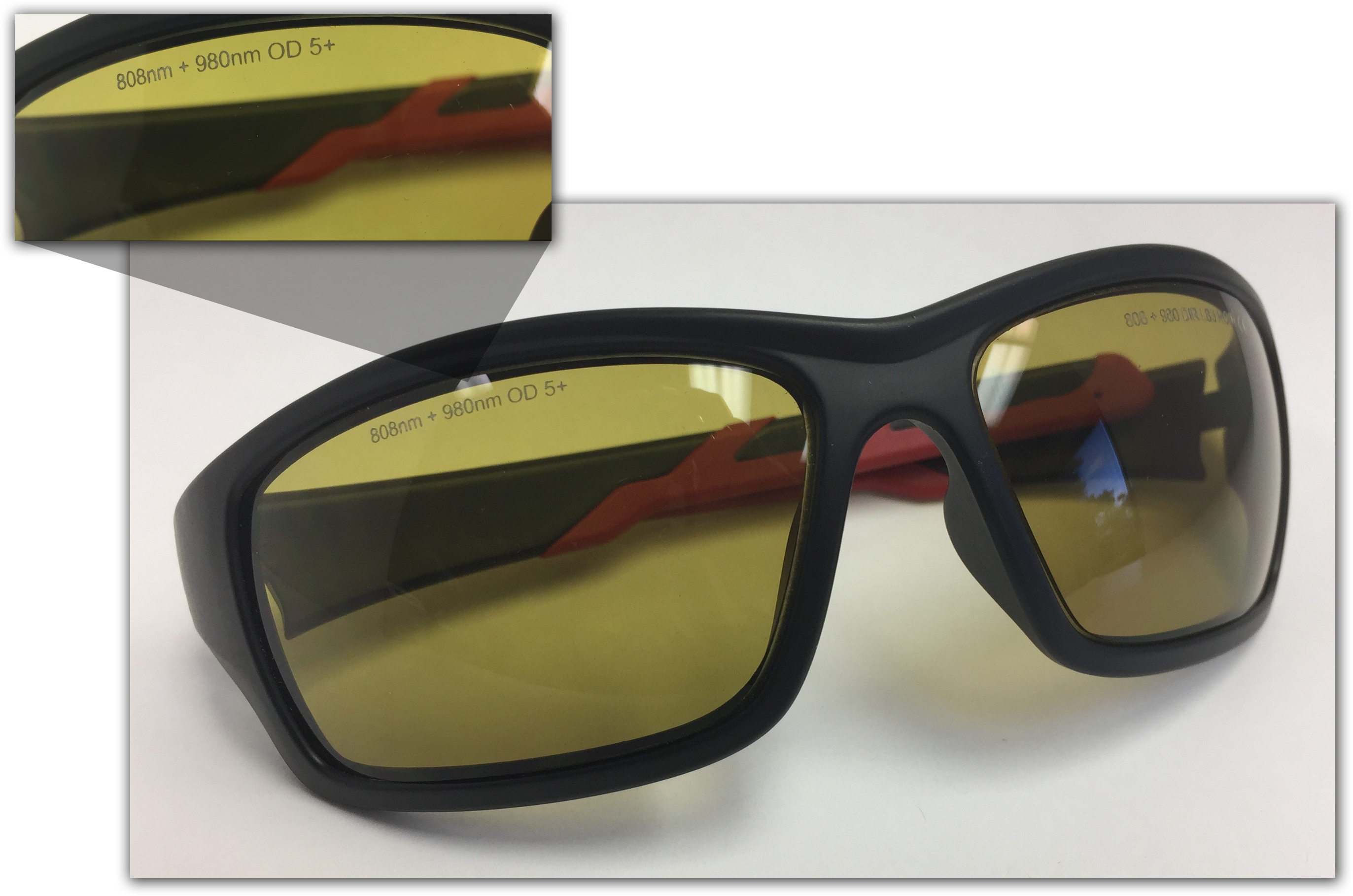When utilizing therapy laser units, ocular protection is the primary safety concern. Exposure to the eye is at the top of a short list of contraindications for photobiomodulation therapy (PBMT). While this medical modality is not applicable to this physical structure, it is of great value for a myriad of conditions affecting other parts of the body. We need to take precautions to prevent accidental ocular exposure, and we would never intentionally laser the eye itself. That being said, an experienced operator can certainly do periorbital treatments as long as they protect the eye itself.
Appropriate ocular protection is easily acquired and achieved. Only laser-safe eyewear of appropriate optical density (OD) specific to the wavelength(s) of light being used should be utilized as personal protective equipment (PPE). This very specific product should be provided by the manufacturer as part of adding PBMT to the practice, but may also be available from separate sources. Laser safe eyewear is always labelled with the wavelength(s) of light they are specific to (on the top or bottom edge of each lens) and with an appropriate optical density (OD). Thus, if the eyewear is not labelled with an optical density for specific wavelength(s), it is not considered to be laser safe.
Since varying therapy units utilize different wavelengths, it is important that ONLY the eyewear provided by the manufacturer be used. Protective laser eyewear is specific to the unit, so we cannot use protective eyewear provided with a surgical laser, for example, when using a therapeutic laser platform.
So, why is it that light outside our visible spectrum (~ 380nm – 700nm) can harmful to the eye? It’s very simple: the globe and the structures within are made to capture and focus light. As light enters through the eye, it is focused by the lens onto the retina for optimal reception and differentiation. While this is designed for average intensity of non-collimated light, we have naturally evolved to avoid excessive exposure with aversion reflexes such as blinking, squinting, etc. By definition, a laser beam of light has three properties: it is monochromatic, coherent, and collimated. Such a beam of light going through a lens would cause damage to the retina due to focusing an already intense beam of light.
Also, we must remain aware of the nominal ocular hazard distance (NOHD). This is the distance within which anyone (patient, operator, or observer) should be wearing laser safe eyewear during laser operation. NOHD can vary greatly as per the specifics of the unit, wavelengths, power, and equipment utilized (including type of treatment head). Following manufacturer recommendations and utilizing appropriate PPE ensures that we are operating well within safety margins.
 Some manufacturers may supply laser safe eyewear for pets as well. Companion Animal Health currently supplies Doggles®, which have had special laser safe lenses of appropriate optical density placed into the frames. Certainly, laser safe eyewear is the best option to protect the eyes of patients when treating around the head and/or neck or forelimbs, but there are also other ways to do this. There may be cases where Doggles may not be available, or the patient will not tolerate them, and in such instances, an operator can use their finger(s) or hand to shield the eyes. A piece of dark cloth can also to cover the eyes be used as any inorganic material will reflect light to a certain degree (depending on several factors as thickness, density, pigmentation, etc).
Some manufacturers may supply laser safe eyewear for pets as well. Companion Animal Health currently supplies Doggles®, which have had special laser safe lenses of appropriate optical density placed into the frames. Certainly, laser safe eyewear is the best option to protect the eyes of patients when treating around the head and/or neck or forelimbs, but there are also other ways to do this. There may be cases where Doggles may not be available, or the patient will not tolerate them, and in such instances, an operator can use their finger(s) or hand to shield the eyes. A piece of dark cloth can also to cover the eyes be used as any inorganic material will reflect light to a certain degree (depending on several factors as thickness, density, pigmentation, etc).
 There are other tools we can use to shield the entire head of the patient itself, such as with the Comfy Cone® Elizabethan collars, made of dark, soft material that is comfortable for the patient to wear. The savvy laser operator may also have an assistant apply a series of distraction techniques for the patient during treatment sessions as well—simply petting the dog or cat, or offering food treats to keep the patient from investigating the laser treatment being administered.
There are other tools we can use to shield the entire head of the patient itself, such as with the Comfy Cone® Elizabethan collars, made of dark, soft material that is comfortable for the patient to wear. The savvy laser operator may also have an assistant apply a series of distraction techniques for the patient during treatment sessions as well—simply petting the dog or cat, or offering food treats to keep the patient from investigating the laser treatment being administered.
Lastly, we also need to remember the required signage that needs to be prominently displayed when the laser is in use. Again, the manufacturer needs to provide this signage as it may slightly vary between different units. Each entryway leading in or out of the room where the laser is being used needs to have this sign as an added measure of safety.
It is important to remember that laser safe eye protection is not only our primary safety parameter, it is also one of the few and yet very specific guidelines set out by OSHA when it comes to the application of photobiomodulation therapy (PBMT). However, meeting this safety standard is easily achieved and should never be an issue in a clinical setting.




